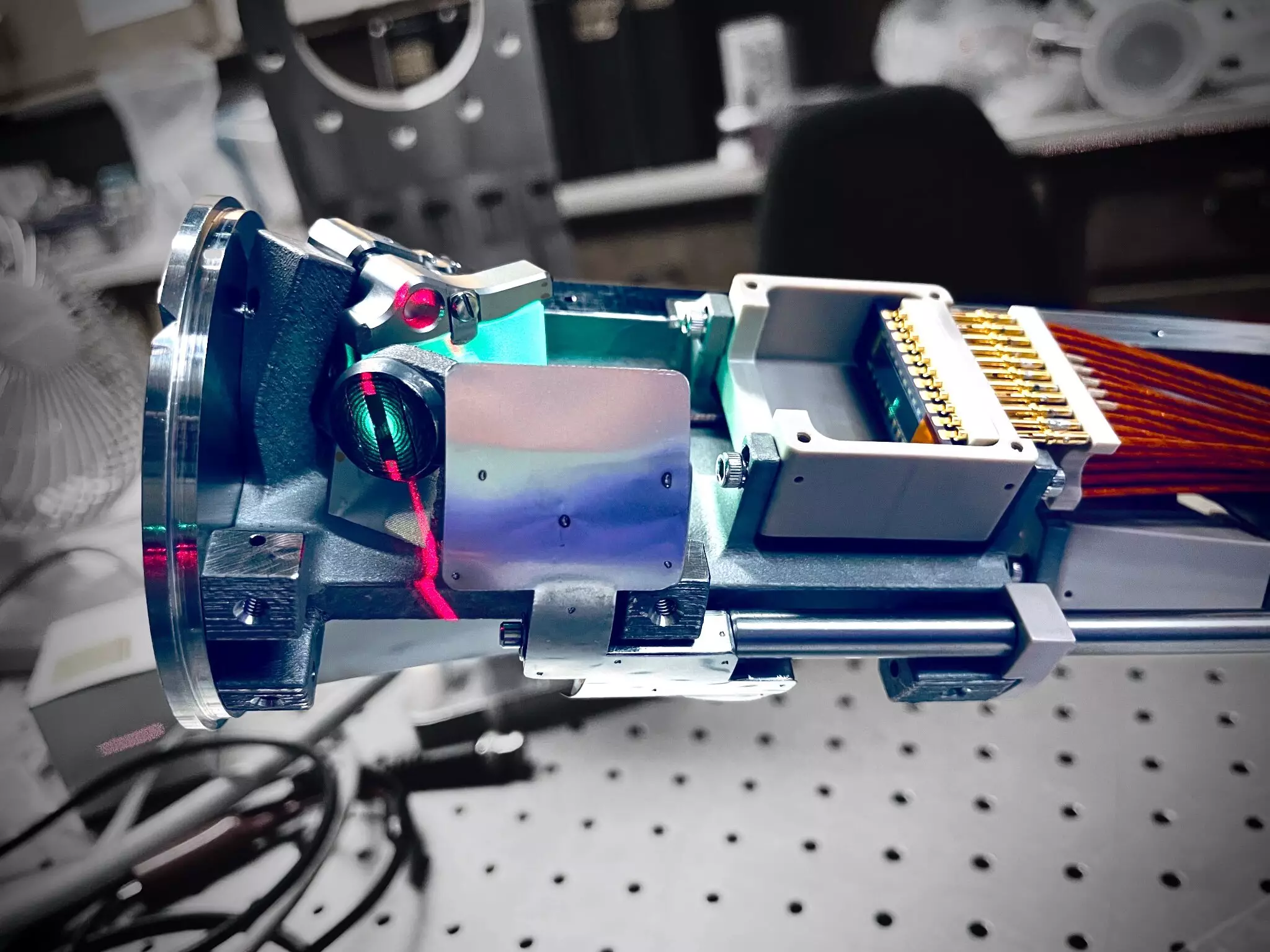Fusion research requires a deep understanding and manipulation of plasma, the electrically charged fourth state of matter that dominates the visible universe. Scientists at the U.S. Department of Energy’s Princeton Plasma Physics Laboratory (PPPL) have recently developed a new plasma measurement instrument called ALPACA. This instrument aims to aid in boosting the heat of fusion reactions in tokamaks, which are crucial for the advancement of fusion power plants.
ALPACA, a diagnostic tool, focuses on observing the light emitted by a halo of neutral atoms surrounding the plasma inside a tokamak device known as DIII-D. By analyzing this light, scientists can gather essential information about the density of neutral atoms. This data is instrumental in maintaining the plasma’s high temperature, ultimately leading to increased power output from fusion reactions.
Fueling is a critical process in fusion research, involving clouds of neutral atoms breaking apart and entering the plasma. The neutral atoms originate from various sources, including hydrogen gas puffs, electron-nuclei combinations, and material surface leaks within the tokamak. ALPACA plays a vital role in measuring the density of these neutral atoms, enhancing scientists’ ability to control and improve the fusion reactions.
ALPACA’s design incorporates innovative techniques like 3D printing to create a hollow chamber for cooling conduits. This advanced approach allows for more precise measurements and analysis of plasma properties. Additionally, ALPACA works in conjunction with another diagnostic tool called LLAMA to provide comprehensive data on neutral atom distribution throughout the tokamak.
The development of ALPACA showcases the collaborative effort among researchers from PPPL, MIT, and other institutions. Key individuals like Laszlo Horvath and David Mauzey have contributed significantly to the design and implementation of this groundbreaking diagnostic tool. The combination of expertise and innovation in plasma diagnostics is essential for pushing the boundaries of fusion research.
Future Prospects and Impact
With ALPACA undergoing testing and set to take measurements when DIII-D resumes operations, the potential for advancing fusion research looks promising. By gaining a deeper understanding of plasma behavior and neutral atom interactions, scientists can optimize fusion reactions and harness increased heat generation. This progress paves the way for more efficient and sustainable energy production through fusion power plants.
The development of advanced plasma diagnostics like ALPACA represents a significant milestone in fusion research. By leveraging cutting-edge technology and scientific expertise, researchers are pushing the boundaries of what is possible in the quest for sustainable fusion energy. The future holds immense potential for unlocking the power of fusion reactions and transitioning towards a cleaner and more efficient energy landscape.


Leave a Reply